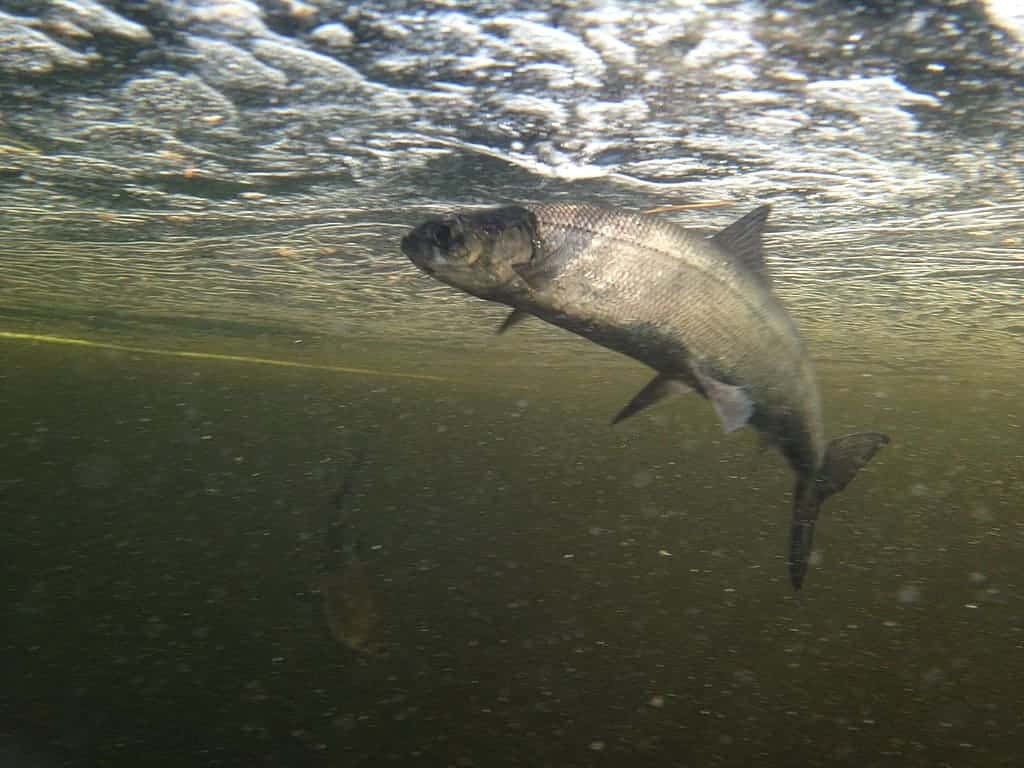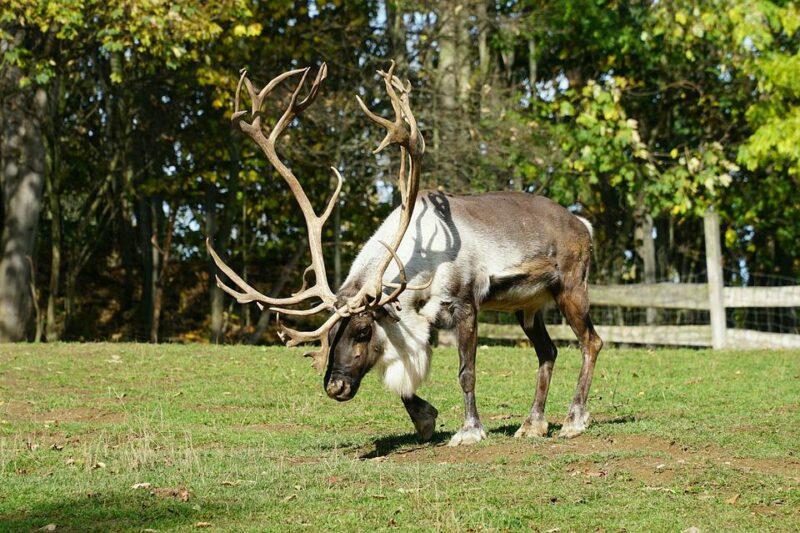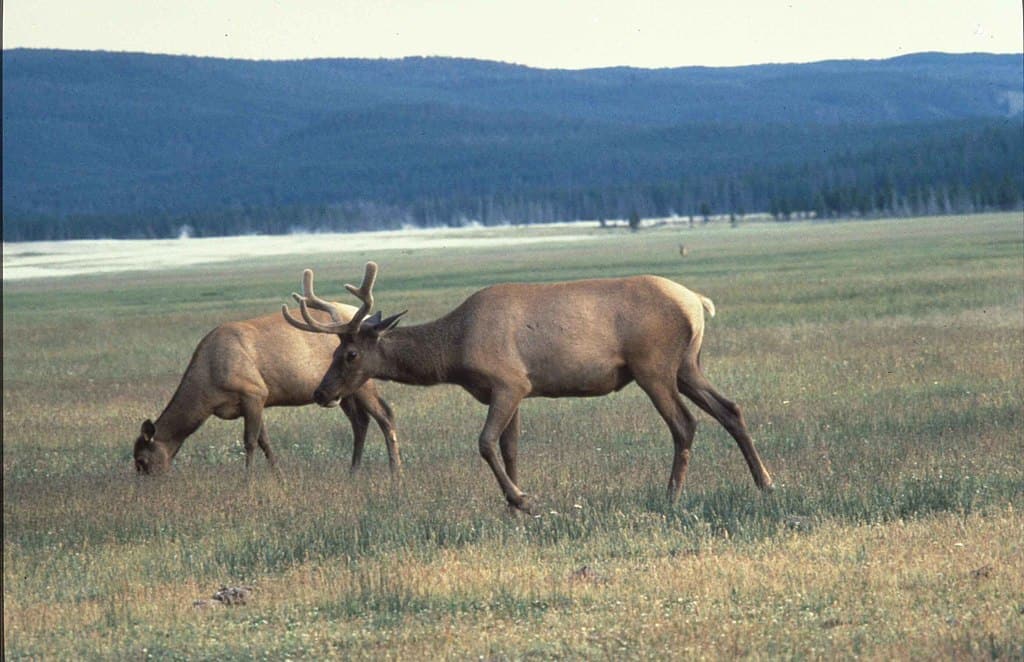Are you interested in learning about the animals in Nova Scotia? Nova Scotia is Canada’s maritime province, with a continental climate. Forests here consist of about four-fifths of the total land area.
Animal life includes beautiful birds like Atlantic puffins, ducks, wood turtles, and eastern moose. Nova Scotia consists of numerous lakes and short rivers.
Have a look at the animals in Nova Scotia:
American Marten

American Marten belongs to the family Mustelidae and is also known as American pine marten; it belongs to the North American mammal species. The name pine marten comes from the common name of the Eurasian species. It is found widely in Canada. It is a tiny animal that likes to live on trees. American marten has a slim body with short legs. Its claws are curvy, which helps them to climb tress properly. American marten has a pointed nose, broad head, and round years. It has a breast plate of cream and orange color present on its chest and throat.
They are primarily found in the northern forests. American martens love to live alone. American marten avoids interacting with another marten, but as the mating season comes, they come out of there dens and look out for mates. They are tree-dwelling animals and move on trees. The have specialized odor glands, which they use for. They hunt in the early morning or dusk as it is the time in prey are primarily active. They are more active during the winter season.
American Marten is both nocturnal and diurnal. It can swim under water and thus is a great swimmer. They have such a fast speed that they can travel through many trees without falling on the ground. They are omnivores as they eat both plants and animals.
Where can American Martens be found in Nova Scotia?
It is found in the Atlantic provinces and can easily be located in Terra Nova National Park, Fundy National Park, and Kejimkujik National Park.
Ribbon Snake

It is a non-venomous snake species snake which belongs to Eastern North America. The ribbon snake grows up to 16 to 35 inches.
It consists of yellow lines with a dark brown color body. Female ribbon snake is found to be thicker than male ribbon snake. They can be easily found in wet climatic conditions such as lakes, moist woodlands, creek beds, and marsh areas. They are found in marine and areas with high vegetation. They like to live in water areas as they hunt for ectothermic animals, making it easy for them to catch their prey. Ribbon snakes use auditory and visual senses for hunting.
As garter snakes eat warm-blooded prey, ribbon snakes do not eat them. Ribbon snakes don’t use an aggressive defense system. They use their brown body to hide behind grass and go deep into the ground. After the hibernation period, when the spring season starts, ribbon snakes look out for another ribbon snake to mate with.
Where can ribbon snakes be found in nova scotia?
Ribbon snakes are closely linked with wetlands and can be quickly found in areas with good water flow and vegetation. The following are the places where one can spot ribbon snakes in Nova Scotia:
Molega Lake Deans Lake
Barren Meadow
Grafton Lake
Harlequin Duck

It is one of the most beautiful and less-found ducks. It is located near the seashore. Among the churning water, this most miniature duck mainly feeds on small shellfish animals. Harlequin ducks are rock, ladies, lords, and Christmas ducks. Female harlequin ducks are brown except for bright white ear patches. Male harlequin duck requires three years to develop full colors, while the young harlequin duck sets color a bit earlier in the first autumn.
The adult harlequin body has white markings present on it with blue color. This duck is located in the lower arctic in four different breeding populations: Greenlandic, Pacific, Icelandic, and eastern North American. Pacific has healthy people, but the other three regions have special protection and management from hunting due to the decreasing number of ducks.
In Canada, a particular act named Migratory Birds Convention Act (MBCA) is made to protect the hunting of these birds. These birds often return to places where they started wintering the same year.
Where can one find Harlequin duck in Nova Scotia?
These ducks are observed from November to April along the coast side. They are generally seen in Eastern shore islands and Kejimkujik National Park alongside other animals in Nova Scotia.
Wood Turtle

There are four types of species of turtles found in Nova Scotia, among which wood turtle is one. Wood turtle has such orange markings that appear when the shell is watery, and it has a bumpy surface that is dark greyish to brown. Wood turtles are found in typical flowing rivers and food plains.
They are also found in areas with less vegetation, wetlands, forests, hayfields, and croplands. In June, female wood turtles give their eggs in sandy areas along rivers, roadsides, borrow pits, etc. This is also a difficult time for these wood turtles as they risk being injured by tractors, cars, or other vehicles. These animals in Nova Scotia are located throughout the state and can be seen swimming in a waterway.
They are terrestrial compared to other turtles but do not go away from the water much. Wood turtle mainly feeds on insects, green plants, mushrooms, grasses, berries, etc. They are found to be fighting with each other over dead rats and frogs. Wood turtles use their hind legs to tap on the ground. This movement produces a sound like rain, so earthworms come to the water’s upper surface and get easily fed by wood turtles.
Where can one find Wood turtles in Nova Scotia?
Wood turtles can be found easily in Nova Scotia but are widely found in Guysborough and Annapolis counties.
Atlantic Whitefish

Atlantic whitefish is slivery from the side to have a blueish-green back. It is considered the most ancient species of whitefish in North America. They have a very different life cycles. It is an endangered species. Atlantic whitefish has tiny scales, making it different from lake whitefish. It has become endangered species. Dams have blocked its way of entering the sea.
Where can one find Atlantic Whitefish in Nova Scotia?
One can find Atlantic whitefish in the Tusket River, Petite river watersheds, and other animals in Nova Scotia.
Common Nighthawk

These are medium-sized birds that have vast mouths and trim beaks. They have a big mouths, which helps them devour insects. Nighthawks have white bands on their wings that can be seen when flying. They are different birds that keep a low profile while sitting on the ground. Common nighthawks are found to be active during the start of morning and dusk, and they are also found in fields and roads. Common nighthawk belongs to the night jar family and is commonly known as goat suckers as they were once found to be drinking goat milk.
They are found all over Nova Scotia, but they are slowly decreasing in number. They are seen in areas that have so many insects.
Common nighthawks are mostly found between mid-April and September. They live on the ground in areas with less vegetation, such as beaches, rocky outcrops, peat bogs, hayfields, cropland, dunes, etc. Common nighthawks are found to lay two eggs directly on the sand or bare soil. Male common nighthawk makes blooming noises through their wings. The ordinary male nighthawk feeds the female common nighthawk, and she further incubates the egg.
Where can one find common nighthawk in nova scotia?
One can find common nighthawks all over Nova Scotia. It is an aerial insectivore easily found in southern and boreal Canada.
Roseate Tern

It has forked feathers that look like streamers when they fly. It goes very actively in water to catch its prey and can also wash small distances in water. It is counted as endangered species in Canada. It has a slender body, long, pointed wings, and tiny legs, and it is not easy to be identified when seen. The adult roseate tern grows 33 to 34 centimeters.
The adult roseate tern is smaller than the Mourning dove and weighs 100-120 grams. The wing of this bird is greyish and has a black colored forehead and nape. Male roseate tern and female roseate tern look the same. Its unique sound, killick, confirms its presence at a particular place. They feed on small fish in salt water. They go up to 20km from their colonies for food and fish. These birds carry more than one fish to their nests. They also take off fish from other terns. These birds lay eggs at the end of May. When the clutch is complete, they start incubating eggs.
Both male and female parents do incubation turn by turn for 24 days. Both parents provide protection and food to the chicks that hatch. After this, chicks leave this area and find a new hiding place. The parents face the problem of raising two chicks as the first get proper food, but the other starve as they go out long distances for food.
Where can one find Roseate Tern in Nova Scotia?
These breeding colonies are located in Yarmouth County on Brothers Islands. These islands are also known as twin islands.
Eastern Chipmunk

It appears to have whitish fur on its stomach and reddish-brown hair on its back and side parts. It also has two white stripes on the side parts and one in the center of the back. It has pouch-shaped cheeks that help it carry and store some food. It is found in southeastern Canada.
It lives in deciduous forests and woodlands but can also reside in rock areas like walls close to houses or other buildings. Eastern chipmunk eats seeds, mushrooms, fruits, corn, berries, and nuts but eats bird eggs, mice, small mammals, snails, and insects. It sleeps a lot of time and does not hibernate ideally, as it wakes up after a few weeks to eat the food they have stored in hidden places. They mate during the start of spring.
The young chipmunks come above ground when they are six weeks older. They spend there most of their time collecting food for the winter season. They travel long distances in search of food. They produce chip-chip sounds, due to which they got their name chipmunk. They can also climb trees but build underground nests with many entrances. They carry soil in their cheek pouches to hide the burrow made. They make their nests disappear by covering them with sticks, leaves, and other similar materials. Eastern chipmunks are very active during the day, providing proper protection to their burrow made, and they like to live alone but not in mating season.
Living solitary or alone is the primary behavioral characteristic of the eastern chipmunk. The two breeding seasons are from February to April and the other from June to August, and they go into a deep sleep during the winter season. Its predators include snakes, bobcats, domestic dogs and cats, hawks, owls, etc.
Where can one find Eastern Chipmunk in Nova Scotia?
Eastern Chipmunk can be found in:
Tobeatic Game Sanctuary
Barachois Pond Provincial Park
Eastern Moose

These animals in Nova Scotia are subspecies of moose found in Eastern Canada. It makes habitat in deciduous forests and boreal forests. Male eastern moose get angry during mating season and attack anything that will excite them. The moose is said to be the world’s largest deer. It has a long face, a dewlap under its throat, a small tail, and long legs.
It has dark brown to black appearance. It is most active at night but can also be seen during the day. It eats herbaceous plants in the summer and bark and buds in the winter. The male moose has large antlers, and they drop them in mating season. The antlers get regrown in about three to five months in the spring and summer seasons. The female moose gives birth to young moose from May to June. Moose have a lifespan of 15 years in the wild.
They are herbivores who love to live in boreal forests. Eastern moose are found in places where food is present more. Their diet includes stems, young trees and shrubs, twigs and stems, etc. In the summer, they like to go on wetlands, or we can say aquatic vegetation is significant for them in the summertime.
Where can one find Eastern Moose in Nova Scotia?
Tobeatic Region
Cobequid Mountains
Chebucto Peninsula
Tangier Grand
Atlantic Puffin

These animals in Nova Scotia are seabirds belonging to the auk family, and it is the only puffin in the Atlantic ocean. Atlantic Puffin is found breeding in Iceland, Quebec, Nova Scotia, Greenland, Norway, etc. It has a vast population and a variety of species, but still, its number is decreasing daily. On land, it has a straight posture, but while in water, it does swim on the above-water surface and dives underwater to catch fish.
It feeds mainly on fish. Atlantic puffin has grey cheek spots, a blackish crown, and a white under area. Atlantic puffins spend autumn and winter in open areas of cold seas and return to coasts when their breeding season starts. Their breeding season begins in late spring. It makes its habitat in clifftop colonies in which they dig a burrow where it lays just one single white egg.
Chicks grow very fast and feed on whole fish only. They increase by six weeks and are ready to enter the sea at night. They swim far away from the land shore and do not comeback to land for many years. They make colonies on islands with less contact or protection from terrestrial predators.
Where can one find Atlantic Puffin in Nova Scotia?
Puffin is the most beautiful and cutest bird in the world. In Nova Scotia, there are three islands; one spot is Atlantic puffin in the summer. Bird Island is one of the most popular places to see Atlantic puffins, as it is an official bird sanctuary in Cape Breton.
From this island, nearby there are two islands known as Ciboux Island and Hertford Island. These islands have significantly less vegetation, and one can find puffin and other seabirds here easily. There is one more beautiful island known as Pearl Island, which is situated south of Nova Scotia.
Summary of Animals in Nova Scotia
Animals in Nova Scotia include beautiful birds like Atlantic puffins, ducks, wood turtles, and eastern moose; Nova Scotia has numerous lakes and short rivers, so many animals are found in this region, like – American Marten, Fisher, Ribbon snake, such Mustelids, Wood turtle, Atlantic whitefish, Common nighthawk, Harlequin duck, and many more.
Around 25 places in Nova Scotia can enjoy wild like Amherst Bird Sanctuary, Brier Island, Long Lake Provincial Park, McNabs Island, Okaslawn Farm Zoo, Point Pleasant Park, and Shubencadie Wildlife Park. If you enjoyed reading about Animals in Nova Scotia, visit our North American Feature blogs or The 7 Most Leech-Infested Lakes In The United States.
Also, Animals In Maryland could be fascinating for you.
- Top 4 Animals and Wildlife Invading The United States - October 20, 2024
- Animals and Wildlife in North Carolina - October 20, 2024
- Leatherback Turtle Breaks Record For Deepest Dive (4,409 feet) - October 20, 2024





